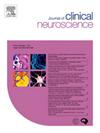Investigation of blood carnitine levels in hydrocephalus patients
IF 1.9
4区 医学
Q3 CLINICAL NEUROLOGY
引用次数: 0
Abstract
Hydrocephalus is a complex neurological disorder that severely impacts the central nervous system. It is a multifactorial disease causing significant neurological deterioration and death in children. Despite numerous studies on hydrocephalus, its pathophysiology remains unclear. This study aims to identify possible changes in carnitine metabolism by comparing the carnitine profiles of children with hydrocephalus to those of healthy children. Additionally, the study seeks to determine the potential use of carnitine derivatives in the diagnosis and treatment of hydrocephalus. Blood samples from 32 hydrocephalic patients and 25 healthy individuals were analyzed. The carnitine profile (C0, C2, C4, etc.) was measured using LC-MS/MS. Statistical analyses of the data were performed using the MetaboAnalyst 5.0 program. The results showed that 23 carnitines were significantly lower in the hydrocephalus group compared to the control group. According to the MetaboAnalyst VIP score, C12 was identified as having high potential as a distinguishing marker. ROC analysis indicated that C12 had a specificity of 100% and a sensitivity of 80%. These findings suggest reduced carnitine profile with hydrocephalus pathology. Therefore, further research should be conducted to explore the addition of carnitine to hydrocephalus treatment protocols.
求助全文
约1分钟内获得全文
求助全文
来源期刊

Journal of Clinical Neuroscience
医学-临床神经学
CiteScore
4.50
自引率
0.00%
发文量
402
审稿时长
40 days
期刊介绍:
This International journal, Journal of Clinical Neuroscience, publishes articles on clinical neurosurgery and neurology and the related neurosciences such as neuro-pathology, neuro-radiology, neuro-ophthalmology and neuro-physiology.
The journal has a broad International perspective, and emphasises the advances occurring in Asia, the Pacific Rim region, Europe and North America. The Journal acts as a focus for publication of major clinical and laboratory research, as well as publishing solicited manuscripts on specific subjects from experts, case reports and other information of interest to clinicians working in the clinical neurosciences.
 求助内容:
求助内容: 应助结果提醒方式:
应助结果提醒方式:


